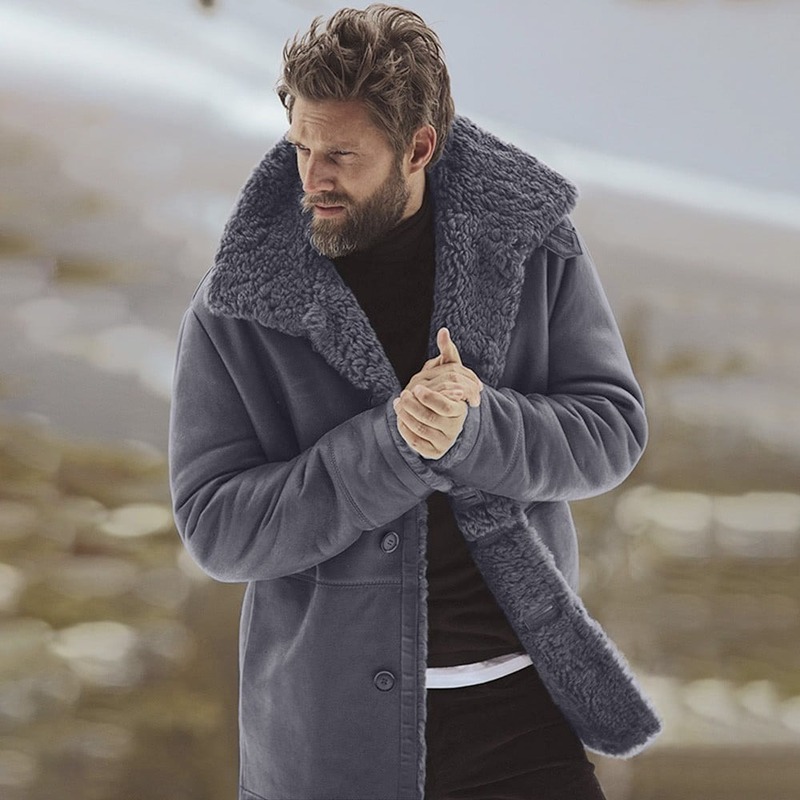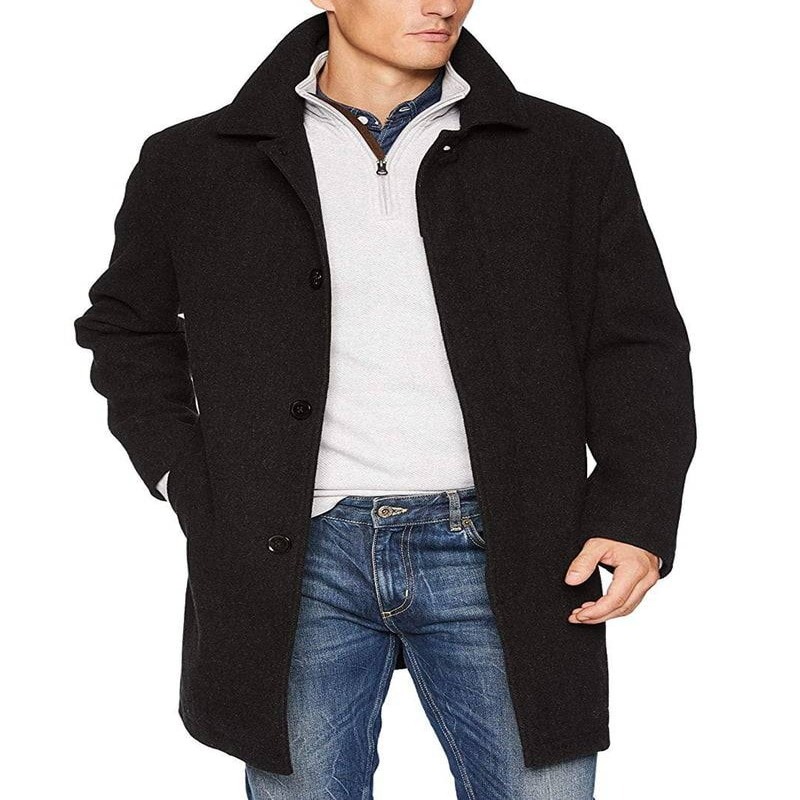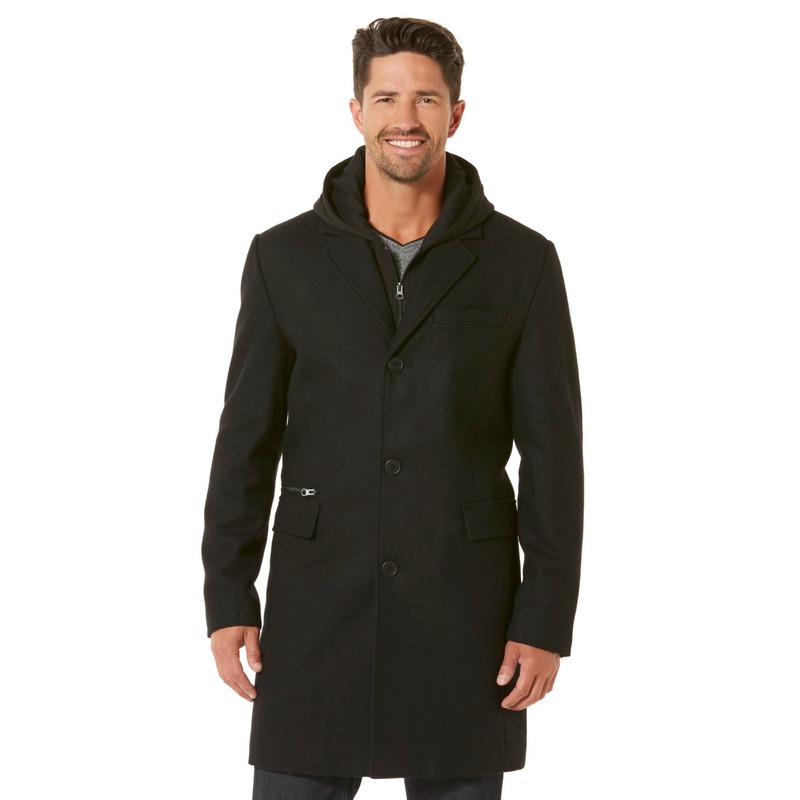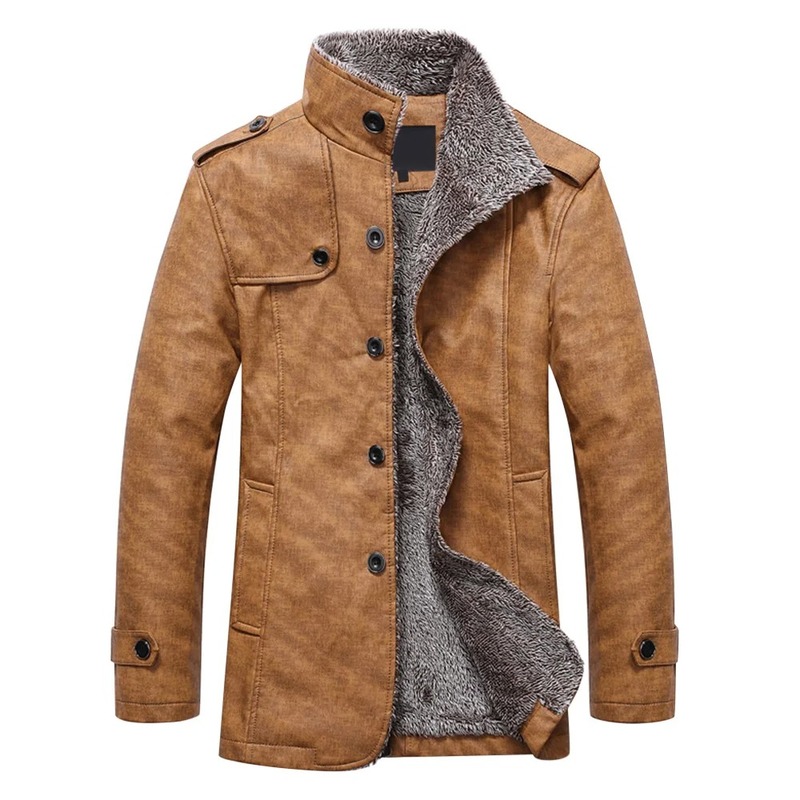
The History of Wool in Winter Wear
Wool has kept people warm for centuries. Its use in winter wear dates back to ancient times. Early civilizations recognized wool’s ability to provide warmth even in harsh conditions. Shepherds and farmers wore wool garments to shield themselves from the cold. The practice grew and wool became a staple in winter fashion. In the Middle Ages, wool trade flourished across Europe. Wool coat was prized for their resilience and insulating properties.
During the Renaissance, wool’s popularity soared among the wealthy. They flaunted finely woven wool coats as status symbols. In the 19th century, the industrial revolution advanced wool production. This made wool coats more accessible to the general public. The military adopted wool for its uniforms because of its durability and warmth. Today, wool coats are a merging of tradition and modern style. They reflect centuries of innovation in making winter wear efficient and fashionable.
As we look back, wool’s history in winter wear shows a journey of adaptation and refinement. From rough cloaks of the past to today’s elegant designs, wool coats have evolved. However, the core reason for their existence remains the same – to keep us warm. Wool has stood the test of time as a winter wardrobe essential.

The Insulating Properties of Wool
Wool is renowned for its excellent insulation. The secret lies in the structure of the wool fibers. Each fiber has a unique crimp, which creates tiny air pockets. These pockets trap body heat, keeping you warm in cold weather. Wool fibers also absorb moisture. This helps maintain warmth even when damp. The lanolin in wool adds to its water-resistant qualities.
Wool’s thermal regulation is another key feature. It adapts to your body temperature. This means it can keep you warm without causing overheating. The breathability of wool promotes this balance. Air can flow freely through the fibers, preventing excessive sweat and discomfort.
Wool’s durability also contributes to its insulating properties. Wool coats retain their structure and warmth over time. They don’t compress or lose their insulating abilities easily. This makes them a long-lasting choice for winter wear.
Overall, the insulating properties of wool make it an ideal material for coats. It’s why generations have trusted wool to keep them warm during the winter months. When choosing a wool coat, these insulation benefits are key to consider.
Types of Wool Coats and Their Benefits
Wool coats come in a variety of styles, each with distinct benefits. The classic pea coat has a timeless design. It offers warmth without bulk and suits both casual and formal looks. Trench wool coats are long and elegant. They provide extra coverage and a sophisticated silhouette. The duffle coat features wood toggles and a hood. It gives a casual, sporty vibe while ensuring full-body warmth.
For extreme cold, parka wool coats are filled with extra insulation. They deliver maximum warmth and protect against wind and snow. The car coat, with a simple straight cut, offers ease of movement. It’s great for those who drive or commute. Military-style wool coats have a structured look. They are both durable and warm, making them a practical choice.
Each coat type uses the natural insulating properties of wool to keep you warm. They also enhance your winter wardrobe with a blend of style and functionality. When you choose a wool coat, think about the climate you live in. Consider the occasions you’ll wear it for. These factors determine the best wool coat style for your needs.

How to Choose the Right Wool Coat for Your Needs
Choosing the right wool coat involves several factors. Consider the climate, your lifestyle, and style preferences. Start by assessing the typical weather conditions you will be facing. If you live in a region with mild winters, a lightweight wool coat might suffice. For harsher climates, look for a coat with a thicker weave or additional insulation.
Evaluate your daily activities. Do you walk or use public transport? A longer wool coat can offer more warmth. If you’re mostly driving, a shorter car coat may be more practical. Consider a coat with a hood or high collar for extra protection on windy days.
Think about your wardrobe. What colors do you usually wear? Choose a wool coat in a neutral color for versatility. Black, grey, or navy coats can match most outfits. If you prefer a pop of color, look for wool coats in bold shades. Remember, dark colors tend to retain warmth better than light ones.
Inspect the coat’s construction. Check for tight seams and thick lining. Make sure the buttons or zippers are sturdy. Try on the coat to ensure it fits well over your typical winter layers. There should be enough room to move comfortably without the coat being too loose.
Lastly, consider your budget. Wool coats can vary in price. Invest in a high-quality coat that will last for years. Cheap coats might not provide the warmth or durability you need. Remember, a good wool coat is an investment against the cold. It’s better to buy one quality piece than to replace a lesser coat every year or two.
Caring for Your Wool Coat: Tips and Best Practices
Taking care of your wool coat is crucial to extend its life and maintain its warmth. Here are some tips and best practices to ensure your coat stays in great shape:
- Read the care label: Always follow the instructions on the coat’s care label.
- Spot clean when needed: Address spills or stains quickly by spot cleaning with a mild detergent.
- Use proper hangers: Hang your wool coat on wide, padded hangers to retain its shape.
- Brush it regularly: Use a soft-bristled brush to remove surface dirt and dust.
- Air it out: Hang your wool coat in fresh air to eliminate odors.
- Avoid high heat: Never expose your wool coat to high heat, as it can shrink or get damaged.
- Dry cleaning: Consider professional dry cleaning once a season for a thorough cleaning.
- Store it properly: During off-seasons, store your wool coat in a breathable garment bag.
By keeping these tips in mind, your wool coat will continue to keep you warm and stylish for years to come. Remember, a little regular maintenance goes a long way in preserving the quality of your wool coat.
Wool Coat Styles and How to Wear Them
Choosing the right style of wool coat can enhance your look while keeping you warm. Here are some popular styles and tips on how to wear them effectively:
- Pea Coats: With their double-breasted front, pea coats are classic and versatile. They work well with both casual jeans and formal trousers. Wear them buttoned up to stay warm and stylish.
- Trench Coats: Trench wool coats offer a sleek look. Pair them with a dress or a suit for a polished outfit. Belt your trench coat to accentuate your waistline.
- Duffle Coats: Duffle coats come with unique toggle closures and often have a hood. They lend a more relaxed feel, so pair them with everyday casual wear like sweaters and jeans.
- Parka Coats: Perfect for very cold weather, parkas offer maximum protection. Wear them over multiple layers and pair with insulated boots for the best defense against the cold.
- Car Coats: Car coats are shorter and ideal for drivers. They offer warmth without restricting movement. Match them with work attire or smart-casual clothes for versatility.
- Military Coats: For a structured and durable option, military wool coats are excellent. They look sharp with both casual outfits and more formal clothing.
When styling your wool coat, remember that accessories can make a difference. Scarves, gloves, and hats not only add extra warmth but also contribute to your overall style. Ensure your accessories complement your coat for a coherent look. Remember to choose the right size to layer under the coat comfortably, without being too bulky. A well-chosen wool coat serves as a key piece in your winter wardrobe, offering warmth and a chance to showcase your personal style.
The Environmental Impact of Wool Production
The production of wool has both positive and negative environmental impacts. On one hand, wool is a natural, renewable resource. Sheep regrow their fleece annually, making wool a more sustainable option than synthetic materials. Moreover, wool is biodegradable, thus has a lower long-term impact on landfills compared to plastics-based fibers.
Despite these benefits, wool production does have its drawbacks. The raising of sheep requires land and water. Overgrazing can lead to soil erosion and habitat loss. Also, sheep farming contributes to greenhouse gas emissions, particularly methane. The processing of wool, from cleaning to dyeing, often involves chemicals and significant water use, potentially leading to pollution if not managed responsibly.
Advances in sustainable farming and eco-friendly processing techniques are helping to reduce the environmental footprint. Producers are adopting practices like rotational grazing to prevent land degradation. They are also investing in methods to capture and reuse water and minimize chemical use. Choosing wool products with environmental certifications can be a wise way to support eco-conscious practices.
As a consumer, you can also impact the environmental footprint of your wool coat. Opt for high-quality pieces that last longer, and consider the care instructions to reduce energy and water usage over the lifetime of the garment. By being informed and making mindful choices, you can enjoy the benefits of a wool coat while also caring for the planet.

Wool Coats Versus Other Winter Fabrics
When choosing winter wear, it’s important to compare wool with other common fabrics. Wool coats are unique in their insulating properties but how do they stand against alternatives? Here, we’ll examine wool’s strengths and how other materials measure up.
- Synthetic Fibers: Synthetic coats made from materials like polyester or nylon are lightweight and often cheaper than wool. However, they might not offer the same level of warmth and breathability. Synthetic fibers can also be less eco-friendly due to non-biodegradable elements. They often lack the natural, soft feel of wool and may not last as long.
- Down Jackets: Filled with feathers, down jackets are known for being incredibly warm. They’re good at trapping heat, making them ideal for very low temperatures. However, they can be bulky and lose insulating power if they get wet. Unlike wool, down does not offer moisture-wicking properties.
- Cotton Coats: Cotton is a breathable fabric, but it is not the best for insulation. It absorbs moisture and takes a long time to dry, which can lead to a chill in cold weather. For mild winters, cotton might be suitable, but it can’t match wool’s performance in real cold.
- Leather and Fur: These materials are often praised for their warmth and wind resistance. Leather is durable but can be heavy and requires special care. Fur is luxurious and warm but controversial due to ethical concerns and its high price point. Neither is as versatile or breathable as wool.
- Fleece: Fleece is a popular synthetic alternative that’s soft and warm. It’s more breathable than other synthetics and works well in dry cold conditions. However, it’s not usually water-resistant and can’t beat the all-weather capabilities of wool.
Wool coats offer a blend of natural warmth, breathability, and durability that’s hard to find in other fabrics. They handle moisture well, keep their insulating properties when wet, and are often more sustainable. For those looking to invest in a single, versatile winter coat, wool is a strong contender. When selecting, consider how these factors align with your needs and environmental values.
